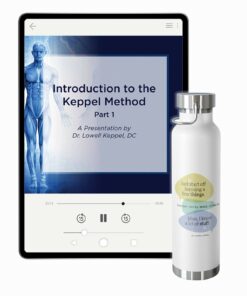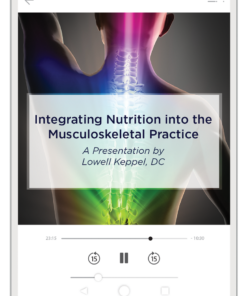It is likely that one of the first things students learn in medical or chiropractic school is how to take blood pressure. It is just as likely that one of the first things you hear when you go to the doctor’s office is “Let’s get your blood pressure.” Indeed, there are several good reasons that this component of medical vital signs is so revered.
The history of how blood pressure measurements came about makes for less than thrilling reading. This article includes the following description of the first recorded evidence of blood pressure in 1733: “A brass pipe connected to a glass tube ran into a horse’s leg artery and observed the rise of the blood column to 8 feet and 3 inches above the level of the left ventricle.”
Thank goodness today we have much more simple, noninvasive technology to evaluate blood pressure. We can buy over the counter devices and take our blood pressure anytime we want. Heck, we can even get our blood pressure taken at the grocery store.
However, many of our patients do not realize that blood pressure can and does fluctuate throughout the course of the day. “Usually, blood pressure starts to rise a few hours before you wake up,” explains the Mayo Clinic. “It continues to rise during the day, peaking at midday. Blood pressure normally drops in the late afternoon and evening. Blood pressure is normally lower at night while you’re sleeping. Your blood pressure measurement at night is called nocturnal blood pressure.”

Specific events throughout the day may influence blood pressure. For example, if a fight with your spouse triggers a stress event, the adrenal glands will produce more adrenaline, which in turn will constrict blood vessels and prepare the body for a flight or fight response. The same thing can occur if, for example, you are driving and suddenly another car almost hits you. This phenomenon is known as labile hypertension. According to the Cleveland Clinic, “Labile hypertension tends to be situational. This means the spike occurs in response to stressful events —a fender bender, intensive physical exertion or thinking about financial woes, for example.”
Other causes of fluctuations in blood pressure can include over-the-counter meds like NSAIDs, oral steroids, stimulant drugs as used to treat ADHD, and oral contraceptives. Your blood pressure may also fluctuate when the autonomic nervous system is not functioning properly.
Here is another fun fact: A full urinary bladder can raise your blood pressure by ten points or more. According to Adventist Health, “When the bladder is full of urine, it puts pressure on the kidneys. This can lead to higher blood pressure. Having high blood pressure can be a sign that your bladder isn’t emptying well, even if you haven’t noticed problems yet.”
As you can see, many factors can impact blood pressure readings. Yet one of the most interesting we have yet to discuss is a condition known as “white coat syndrome,” which happens when your blood pressure is normal at home but typically rises when taken at the doctor’s office or in another medical setting.
Given all these factors, diagnosing high blood pressure from just one or two random readings is not sound health care. While it is an important data point to add to overall exam results, high blood pressure must be confirmed as chronic. I always instruct my patients to relax before running a Heart Sound Recording. It is nothing more than a single blood pressure test. I would never diagnose a problem off of just one blood pressure reading, but I will consider the numbers when looking at the heart graph.
As I was taught in chiropractic college, do not accept someone else’s diagnosis. Do your own work up.
If a patient’s blood pressure exhibits an increase at every visit, clearly they need nutritional support in that area. If his book Adjuvant Protocols for Healing: A Practitioner’s Manual, Joseph Antell recommends the following protocol of Standard Process products:
- Cardio-Plus (8 per day): Helps relieve stress from an overworked heart.

- Drenamin (8 per day): Supports adrenal gland function, which can dilate on coronary blood vessels.
- Soybean Lecithin (8 per day): Can help keep cholesterol in the blood so the liver can filter it out.
- Min-Chex (9 per day): Nerve-relating minerals with potassium, which has been proven to lower blood pressure.
This is a great protocol to start the patient on. Monitor their progress by asking the patient to take their blood pressure periodically between office visits.
Did you know that an astounding 47 percent (116 million) of Americans have been diagnosed with high blood pressure with a systolic over 130 mmHg? According to the CDC, only one in four (24 percent) have their blood pressure under control. Now, some of these cases are misdiagnosed because of white coat syndrome. Misdiagnosis can also result from concluding a chronic high blood pressure from only one blood pressure test. I find that very common with my patients who have been put on blood pressure meds.
Learning to help your patients with high blood pressure can certainly set you apart from many other providers. Antell’s protocol is a great place to start. In the next edition of Good to Know, I will go into more detail about the causes of high blood pressure and outline a rational on how to address the situation. Everyone seems to agree on one thing—that lifestyle changes should be first on the list for helping people with high blood pressure.
Remember, more now than ever…results refer!
Images from iStock/simpson33 (main), fizkes (couple fighting), Rasi Bhadramani (heart).






